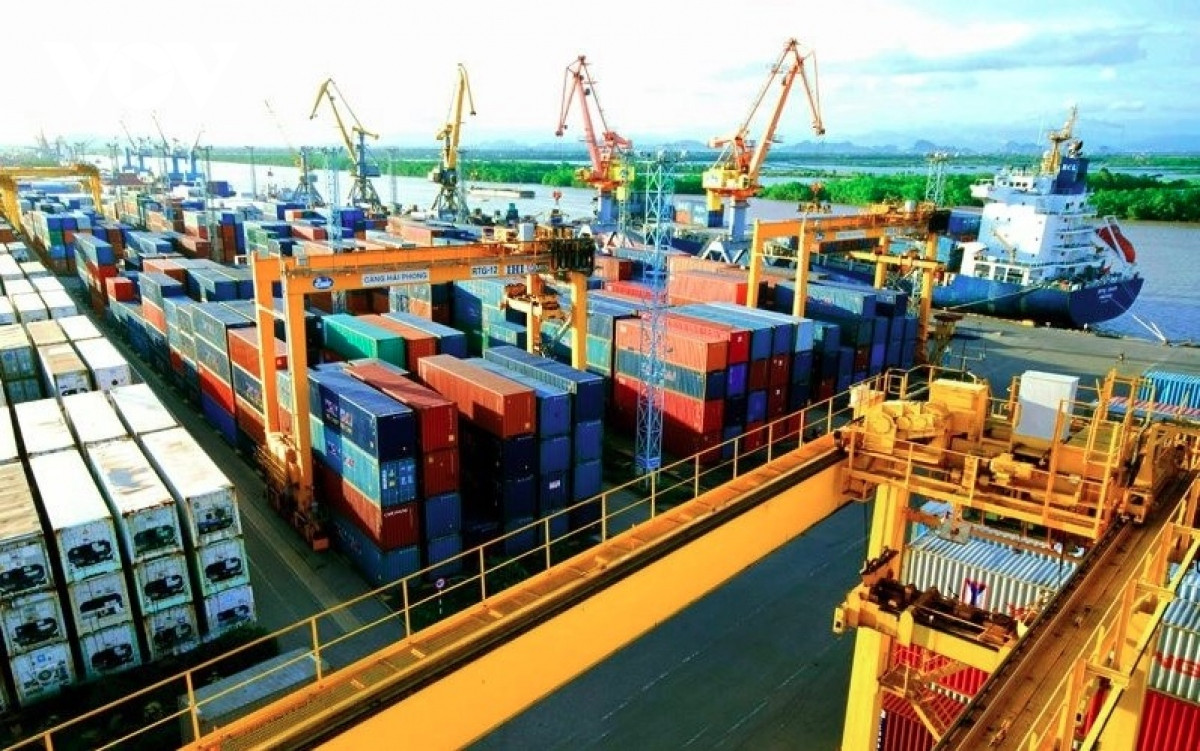
Local businesses pin high hope on brighter export market picture
According to a report compiled by the Ministry of Industry and Trade, last year’s export turnover hit an estimated US$ 355.5 billion, down 4.4% compared to the previous year. In 2023 there were a total of 35 items recording an export turnover of over US$1 billion, accounting for 93.6% of total export turnover, whilst seven export items had export turnover exceeding US$10 billion, making up 66%.
Export orders are gradually recovering since the fourth quarter of 2023, which is one of the factors that export businesses believe that this year the market picture will improve compared to 2023.
Tran Nhu Tung, chairman of the Board of Directors of Thanh Cong Textile and Garment Investment Trading Joint Stock Company, said that the firm currently has enough orders for the first quarter of the year, but still less than compared to previous years.
However, the situation may improve in the second quarter of 2024, early in April and later in June, when the US Federal Reserve moves to cut interest rates and support business recovery.
If everything occurs as predicted, then 2024 can still be a strong year for apparel businesses, Tung went on to say.
The EU market accounts for 75% of LNK Company's exports. According to Vu Thi Nhung, director of LNK Company, by mid-December the company had received enough orders until the first quarter of 2024. However, the speed of receiving orders is slower in comparison to the same period from previous years.
Opposite comments
Investment fund VinaCapital has just released an analysis report saying that Vietnamese export activities will recover from a fall of 4% in 2023 to an increase of 7% this year.
Reduced interest rates in 2023 will also support the real estate market's recovery, just as it supported the stock market last year.
The biggest risk in VinaCapital's quite positive forecast is the prospect of the US economy falling into a crisis, an issue which would cause demand for "Made in Vietnam" products to decline.
The value of the US$ will increase in this situation due to a tendency to hold on to US currency, meaning this will limit the country’s ability to cut interest rates to support the national economy.
However, the can competently respond to this situation through fiscal stimulus solutions, including increasing public investment. In early 2023, the Government outlined a direction to increase public investment by 50% to US$30 billion, equivalent to 7% of GDP in 2023, up from 4% of GDP in 2022.
Most likely, this is a step to support the economy amid demand for "Made in Vietnam" products being impacted by falling consumer demand globally.
Additionally, there are also opinions that there are still too many uncertain factors, thereby making it difficult for exports to create a breakthrough in the year ahead.
According to Tran Le Minh, managing director of VIS Rating, Vietnam Investors Service and Credit Rating Agency, Vietnamese exports still heavily depend on both the US and EU markets. However, the economic scale of these two large markets is predicted to not be optimistic.
Sharing this opinion on the issue, Tran Ngoc Bau, founder and CEO of WiGroup, assessed that consumption in some key markets remains weak, meaning that 2024 may be lower than last year. Therefore, Vietnamese exports are unlikely to recover well this year.
According to the Ministry of Industry and Trade, in general, external pressure on Vietnamese industrial production and import-export activities in the year ahead comes from all three channels.
Firstly, the international trade channel in which many economies are the nation’s major partners is growing slowly, making it difficult for aggregate demand to recover strongly, thereby affecting export results.
Secondly, international investment channels, when world interest rates are generally still anchored at high levels, make it difficult to attract further capital for investment in general, whilst also directly putting significant pressure to keep invested capital in Vietnam, as well as attracting new investment capital.
Thirdly, the monetary financial channel with the pressure of devaluation of the domestic currency compared to the US$, although somewhat favourable for exports, will cause the cost of importing raw materials to serve production to surge, duly increasing the payment scale of foreign debts.
To achieve this year’s total export turnover growth target of about 6% compared to 2023, the Ministry of Industry and Trade said it will primarily focus on effectively exploiting free trade agreements (FTAs) that have come into force and been signed, as well as implementing new agreements in order to expand and diversify markets, import and export products, and supply chains.
The Ministry recommends that businesses should closely monitor fluctuations in production, supply and demand, and commodity prices both internationally and domestically to promptly devise solutions for effective and timely response solutions aimed at achieving the goals set for 2024, as well as those for the 2021 to 2025 period.
Source: VOV